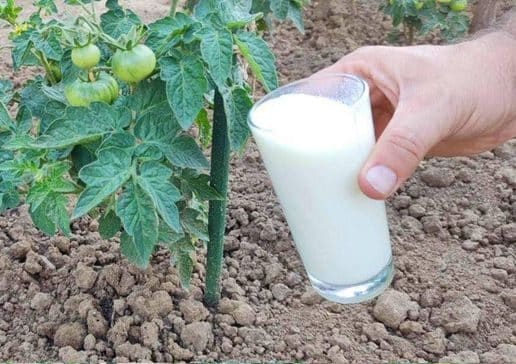Epsom salt, chemically known as magnesium sulfate, is a versatile and cost-effective gardening secret that can work wonders for your tomato plants. Beyond its household uses, Epsom salt is a valuable tool in promoting the health, growth, and productivity of tomatoes.

In this article, we’ll explore the various benefits of using Epsom salt in your tomato gardening endeavors, helping you unlock the full potential of your plants and enjoy a bountiful harvest.
Enhanced Nutrient Absorption:
Epsom salt contains both magnesium and sulfur, two essential nutrients that tomatoes require for optimal growth. Magnesium aids in chlorophyll production, enabling efficient photosynthesis and vibrant leaf color. Sulfur is vital for overall plant health, enzyme activity, and nutrient uptake.
By adding Epsom salt to the soil, you enhance your tomato plants’ ability to absorb these vital nutrients, resulting in healthier and more robust growth.
Prevention of Magnesium Deficiency:
Magnesium deficiency is a common issue in tomato plants, leading to yellowing leaves and decreased fruit production. Epsom salt effectively addresses this problem by providing an easily absorbable source of magnesium.
Applying Epsom salt can prevent or alleviate magnesium deficiency, resulting in healthier foliage and improved fruit development.

Increased Fruit Production:
Epsom salt’s positive impact on nutrient absorption and overall plant health translates into increased fruit production. The enhanced chlorophyll production leads to more efficient photosynthesis, which directly contributes to higher energy levels for fruit formation. Tomatoes grown with the aid of Epsom salt are likely to yield larger, juicier, and more abundant fruits.
Improved Soil Structure:
Epsom salt can also contribute to soil health by promoting better structure. The sulfur content in Epsom salt encourages the development of soil microorganisms that contribute to soil aeration and drainage.
This results in a well-aerated soil environment that allows tomato roots to access oxygen and nutrients more easily.
How to Use Epsom Salt for Tomatoes:
- Soil Preparation: Before planting, mix a tablespoon of Epsom salt per gallon of soil and blend it well. This ensures that the soil provides a balanced amount of magnesium and sulfur for your tomato plants.
- Root Drench: Once your tomato plants are established, dissolve a tablespoon of Epsom salt in a gallon of water. Use this solution to water your tomato plants at the base, ensuring the nutrients reach the root system. Apply this solution every 2-4 weeks during the growing season.
- Foliar Spray: Create a foliar spray by dissolving a teaspoon of Epsom salt in a liter of water. Spray this solution onto the tomato plant’s leaves, allowing them to absorb the nutrients directly. Perform foliar spraying every 2-4 weeks.
Tips for Success:
- Measure Carefully: Excessive use of Epsom salt can lead to nutrient imbalances or damage to plants. Stick to recommended dosage guidelines.
- Test Soil pH: Epsom salt is most effective in slightly acidic to neutral soils. Test your soil’s pH and adjust if necessary for optimal nutrient uptake.
- Monitor Plant Response: Keep an eye on your tomato plants’ growth and appearance after using Epsom salt. If you notice positive changes, continue with the application.
- Use Quality Epsom Salt: Choose high-quality Epsom salt without additives or scents for gardening purposes.
By incorporating Epsom salt into your tomato gardening routine, you’re giving your plants an extra boost of essential nutrients and promoting overall vitality. This natural solution can lead to healthier, more productive tomato plants, ensuring a satisfying harvest that’s sure to delight your taste buds and elevate your gardening experience.


